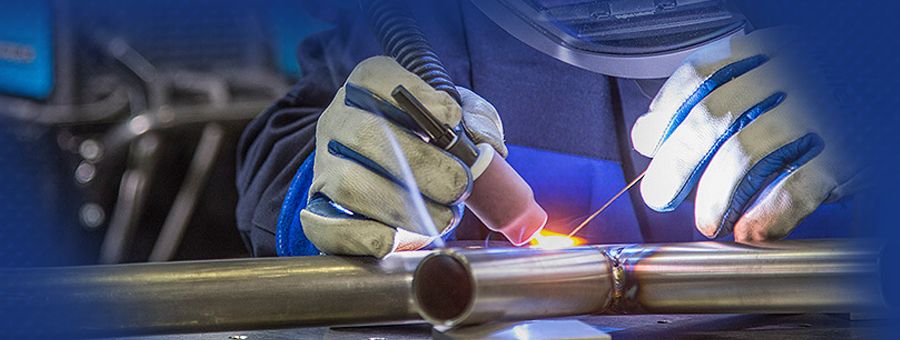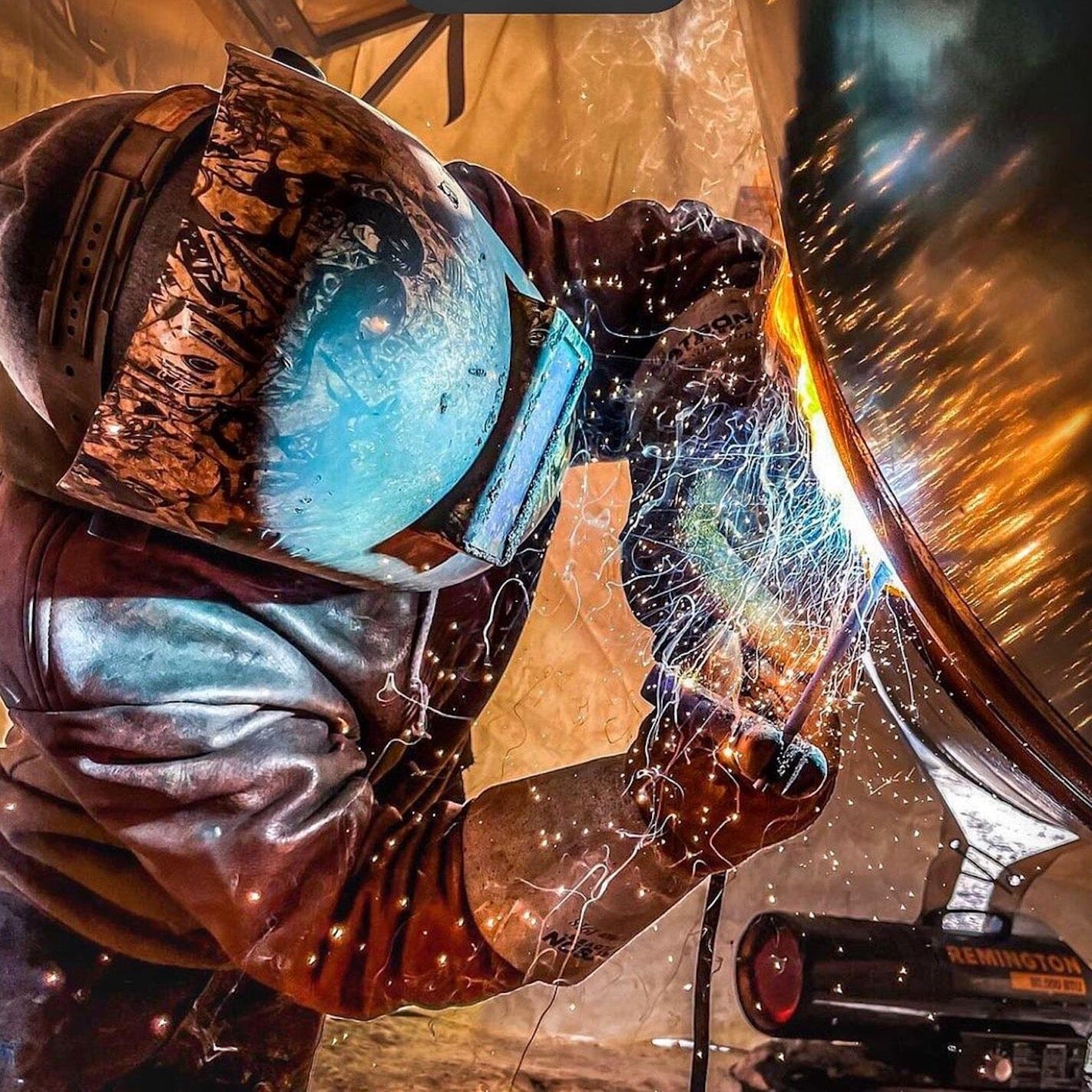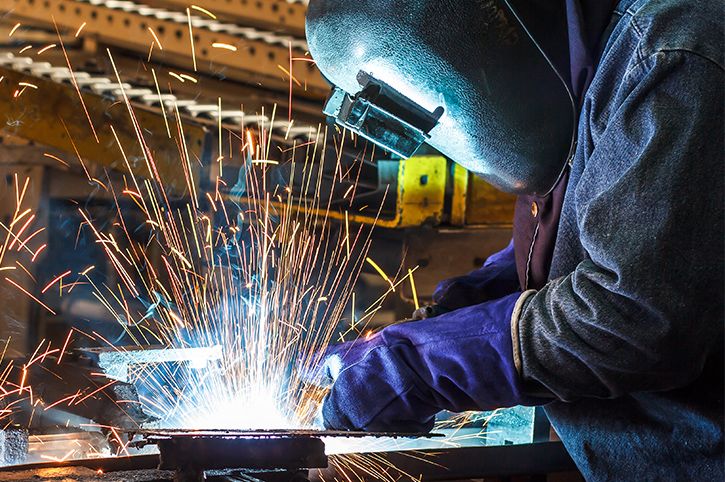Analyzing cracking in welds and how Montana Mobile Welding and Repair Belgrade Welding manages it
Typical Welding Fixing Issues and How to Address Them Successfully
Welding repair work often come across a variety of issues that can endanger the stability of the end product. Usual problems include poor infiltration, porosity, and imbalance, to name a few. Each defect provides unique challenges that call for particular strategies for resolution. Understanding these problems is necessary for welders intending to enhance their skills and end results. This conversation will certainly check out these usual welding fixing problems and efficient methods to address them.
Poor Infiltration
Insufficient infiltration happens when the weld steel stops working to totally fuse with the base material, resulting in weak joints and prospective structural failures. This problem usually originates from inadequate heat input, wrong electrode angle, or incorrect welding rate. Welders may experience inadequate penetration due to a mistake of the required criteria for a specific product thickness or kind. Additionally, contamination on the base material's surface can hinder reliable bonding, worsening the issue. To attend to inadequate infiltration, welders ought to assure appropriate settings on their tools and maintain a tidy work surface. Normal evaluation of welds is advised to determine any kind of deficiencies early, permitting for timely adjustments and the prevention of jeopardized architectural honesty in welded settings up.
Porosity
Porosity is an usual defect in bonded joints that manifests as little gas bubbles entraped within the weld steel. This flaw can jeopardize the integrity of the weld, bring about reduced strength and potential failure under anxiety. Welding. Porosity normally arises from contamination, wetness, or incorrect welding methods, which permit gases to run away right into the molten weld pool. To resolve porosity, welders need to guarantee appropriate surface area preparation, keep a tidy functioning environment, and make use of appropriate welding specifications. In addition, selecting the best filler product and shielding gas can mitigate gas entrapment. Normal examination and screening of welds can help identify porosity early, ensuring timely corrective activities are taken, therefore maintaining the quality and integrity of the welded structure
Imbalance
Imbalance in welding can arise from numerous elements, consisting of inappropriate configuration and thermal expansion. Recognizing the origin is vital for effective resolution. Numerous modification techniques are available to realign components and guarantee architectural honesty.
Causes of Imbalance
Welding misalignment usually stems from a range of underlying issues that can jeopardize architectural honesty. One primary reason is incorrect fit-up of elements before welding, which can result in voids and uneven surfaces. Variants in thermal expansion throughout the welding procedure can also result in distortion, particularly if the products being signed up with have various coefficients of development. Furthermore, poor clamping and fixturing may fall short to hold parts safely in position, causing activity throughout welding. Badly kept equipment, consisting of welding machines and tools, might introduce incongruities in the weld bead, further adding to imbalance. Driver error, stemming from not enough training or experience, can also play a substantial role in creating misaligned welds.

Modification Strategies Available
Dealing with imbalance successfully requires a mix of corrective techniques tailored to the details issues available. One usual technique is using fixtures or jigs to hold components in the appropriate placement throughout welding, guaranteeing consistent alignment. Additionally, preheating the products can help reduce distortion and boost fit-up. For considerable misalignment, mechanical realignment strategies, such as using hydraulic jacks or clamps, can be employed to remedy the position prior to welding. Post-weld warmth treatment might also be necessary to ease stresses caused by misalignment. Finally, cautious examination and modification throughout the arrangement stage can avoid imbalance issues from becoming substantial problems, promoting a smoother welding procedure and enhancing overall structural honesty.
Distortion
Distortion is a typical obstacle in welding that can arise from different factors, including unequal heating & cooling. Recognizing the reasons for distortion is vital for applying efficient prevention methods. Addressing this problem not only improves architectural integrity but additionally enhances the overall high quality of the weld.
Root causes of Distortion
When based on the extreme warm of welding, materials usually undertake modifications that can lead to distortion. This sensation mainly develops from thermal development and contraction during the welding process. As the weld location warms up, the material increases; upon air conditioning, it gets, which can produce interior tensions. Furthermore, unequal heating across a work surface can aggravate these tensions, resulting in warping or flexing. The kind of material likewise plays a substantial duty; metals with differing thermal conductivity and coefficients of development might react differently, resulting in unpredictable distortions. Inadequate joint design and insufficient fixturing can add to imbalance during welding, increasing the chance of distortion. Recognizing these causes is essential for effective welding repair work and avoidance strategies.
Avoidance Techniques
Reliable prevention strategies for distortion during welding concentrate on controlling warm input and guaranteeing correct joint style. Keeping a constant heat input aids to lessen thermal development and tightening, which can bring about distortion. Utilizing strategies such as pre-heating the workpiece can also decrease the temperature level gradient, promoting consistent home heating. In addition, picking appropriate joint designs, such as T-joints or lap joints, can improve security and minimize stress and anxiety focus. Executing appropriate fixturing to secure the workpieces in area further aids in preserving placement throughout the welding procedure. Lastly, staggered welding sequences can disperse heat a lot more equally, stopping local distortion. By using these techniques, welders can significantly reduce the possibility of distortion and boost the general high quality of their welds.
Splitting
Breaking is a common concern encountered in welding repair work, frequently resulting from numerous factors such as incorrect air conditioning prices, product option, or insufficient joint preparation. The occurrence of cracks can significantly endanger the honesty of the weld, leading to possible failings throughout procedure. To address this issue, welders should initially examine the origin, guaranteeing that products are compatible and suitably picked for the specific application. Furthermore, managing the cooling rate throughout the welding procedure is important; quick air conditioning can generate anxiety and cause splitting. Appropriate joint style and preparation additionally add to minimizing the danger. Carrying out these strategies can boost weld quality and resilience, inevitably decreasing the chance of cracking in completed weldments.

Incomplete Fusion
A significant concern in welding repairs is insufficient fusion, which happens when the weld steel does not appropriately bond with their website the base product or previous weld passes - Montana Mobile Welding and Repair Fabrication. This flaw can bring about weaknesses in the joint, possibly endangering the stability of the bonded framework. Factors adding to insufficient blend include not enough heat input, improper welding strategy, and contamination of the surface areas being signed up with. To address this concern successfully, welders must guarantee appropriate pre-weld cleansing and surface area prep work, in addition to readjust their welding parameters to achieve sufficient penetration and combination. Normal assessment during the published here welding procedure can likewise help recognize insufficient blend early, allowing for timely corrective measures to boost the total top quality of the weld
Overheating
While welding repairs can boost architectural stability, overheating provides a substantial obstacle that can bring about product degradation. Too much heat during welding can modify the mechanical residential properties of metals, leading to lowered stamina, increased brittleness, and warping. This sensation is especially crucial in high-stress applications where structural reliability is critical. Identifying getting too hot can entail aesthetic examinations for staining or distortion, as well as keeping track of temperature during the welding procedure. To mitigate the threats associated with overheating, welders must employ suitable strategies, such as controlling heat input, readjusting travel rate, and using suitable filler materials. Furthermore, carrying out pre- and post-weld warm therapies can assist bring back material properties and boost the total quality of the repair work, making certain lasting performance and security.
Often Asked Questions
What Are the Usual Indicators of a Welding Issue?

How Can I Check My Welds for Top quality?
To test welds for top quality, one can use visual examinations, ultrasonic testing, and radiographic techniques. Each method ensures structural integrity, identifies flaws, and verifies adherence to defined standards, ultimately boosting the dependability of the bonded joints.
What Safety and security Safety Measures Should I Take While Welding?
When welding, one ought to prioritize safety and security by putting on suitable individual protective tools, making sure correct air flow, securing flammable products away, maintaining a clean work area, and knowing environments to avoid injuries and crashes.
Can I Fix a Weld Without Redoing the Entire Joint?
Fixing a weld without redesigning the whole joint is possible, relying on the damage (Belgrade Fabrication). Strategies such as grinding, adding filler material, or making use of a welding procedure can properly resolve specific flaws while maintaining the surrounding structure
What Tools Are Crucial for Reliable Welding Services?
Essential devices for effective welding repairs consist of a welding equipment, cord brush, grinder, safety gear, clamps, and filler products. Each tool plays a crucial role in guaranteeing top quality and safety and security throughout the fixing process. Porosity typically occurs from contamination, moisture, or improper welding strategies, which permit gases to run away into the molten weld swimming pool. Inadequately maintained devices, consisting of welding equipments and devices, may introduce incongruities in the weld bead, further adding to imbalance. When subjected to the extreme heat of welding, materials usually go through adjustments that can lead to distortion. Splitting is a typical read review issue experienced in welding repair work, frequently resulting from various aspects such as improper air conditioning prices, material selection, or poor joint prep work. A significant problem in welding repair work is insufficient fusion, which happens when the weld steel does not properly bond with the base material or previous weld passes.